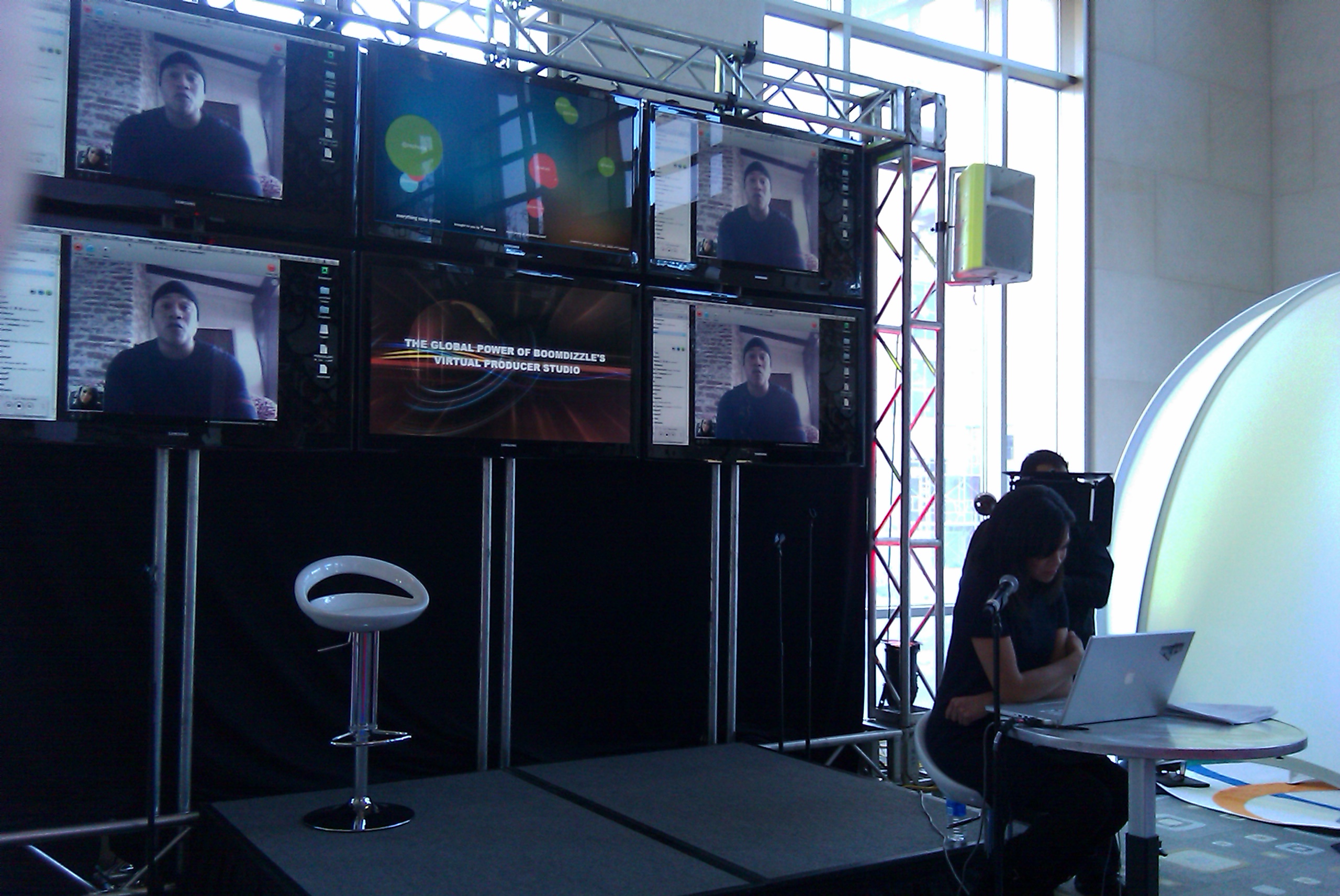For my second dispatch from SXSW (filed from a plane somewhere over Amarillo), I wanted to offer my thoughts on the keynote interview with Twitter’s Evan Williams, which has already achieved notoriety.
So why did it fail?
First, it failed expectations: the keynote room must hold 4,000 people. It filled up, and the overflow room that must have held another 1500 was as well. That leads to a certain feeling of hype tough to meet. It didn’t. And the big announcement at the beginning, which was somewhat newsworthy, was presented in an almost laconic fashion.
Second, it failed as a format. For a crowd that large, you need energy and movement. To relax on a black chair and sit cross-legged swigging from a water bottle is never a good idea talking to a group that large. I heard from another conference attendee that SXSW always utilizes this format for one of the keynotes. I would recommend not doing so, and for a free badge for next year, I would happily advise the SXSW organizers of that opinion. Save that format for a smaller panel. This same attendee watched the interview in the overflow room, and he felt it wasn’t so bad (perhaps it worked better as TV?) He also had seen Evan speak before, and described him as effective.
 Of course, the interviewer (Harvard Business Review’s Umair Haque) himself failed. As an interviewer, your job is to make the subject interesting. The best (Charlie Rose, Craig Ferguson) bring out what makes that person unique, and allow them the space to shine and interject when needed. Haque discussed himself too much, forgot he wasn’t the star, had too monotone of a delivery style, and lobbed softball questions. My sense is that he is intelligent, but this did not come through (and he recognized his weakness as an interviewer on his blog). I feel bad for him as he has taken an Internet beating (including my ever-important one, though I hope I have offered constructive comments). Ironically, the previous session I attended addressed the issue of proper interviewing. As Nancy Baym (that session’s moderator) told me via Twitter later, if she had given her talk after the session, she would have simply said “don’t do that. ok, bye.”
Of course, the interviewer (Harvard Business Review’s Umair Haque) himself failed. As an interviewer, your job is to make the subject interesting. The best (Charlie Rose, Craig Ferguson) bring out what makes that person unique, and allow them the space to shine and interject when needed. Haque discussed himself too much, forgot he wasn’t the star, had too monotone of a delivery style, and lobbed softball questions. My sense is that he is intelligent, but this did not come through (and he recognized his weakness as an interviewer on his blog). I feel bad for him as he has taken an Internet beating (including my ever-important one, though I hope I have offered constructive comments). Ironically, the previous session I attended addressed the issue of proper interviewing. As Nancy Baym (that session’s moderator) told me via Twitter later, if she had given her talk after the session, she would have simply said “don’t do that. ok, bye.”
And finally, it failed to be interesting (see softball questions noted above). I was among the early leavers, as I had trouble twittering the speech due to a bad connection (I did commiserate with my friend Jason via text). I wanted also to see what the overflow room looked like. Allegedly by the interview’s end the hall looked maybe half-filled, though with the bright lights and darkened audience, the presenters had no idea of what had happened until afterward.
What succeeded? The massive power of back channel communication, which emanated, of course, from Twitter. There were some massively funny tweets. My two favorites? 1) @ev spoke of windows and doors. Fortunately for those attending, there were none of the former and plenty of the latter (paraphrased), and 2) “This @ev Keynote provides much needed mental rest for #sxsw attendees. Almost a Buddhist retreat.” It was the equivalent of the creator of FourSquare getting stalked at the grocery store where he holds the honorary title of “mayor.”
In retrospect, I wish I had written funnier tweets, but as someone who often speaks in public over nine hours a week, I felt wary of being a snarky audience member. I still keep danah boyd’s account of this happening to her in mind, and it scares me. The geek culture makes snap decisions (see The Simpsons’ Comic Book Guy), perhaps as a result of the amount and speed of the information they put themselves they absorb. The potential power of Twitter and whatever lies next lurks.


